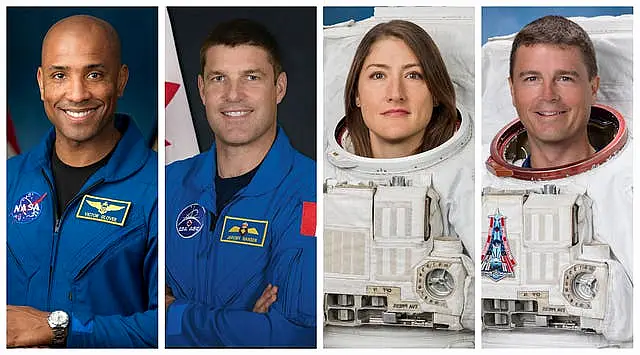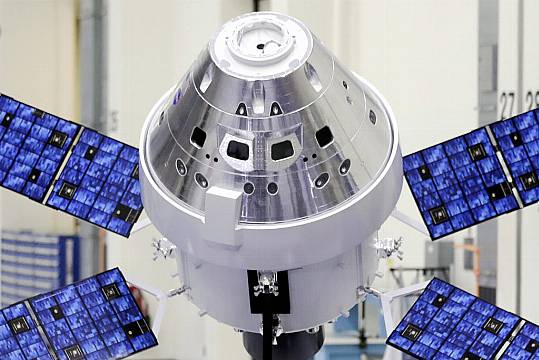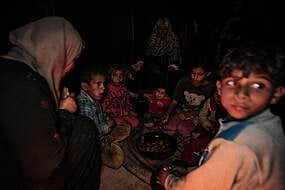Nasa has named the four astronauts who will fly to the moon by the end of next year.
The four – one woman and three men – were introduced during a ceremony in Houston.
“This is humanity’s crew,” said Nasa administrator Bill Nelson.

The three Americans and one Canadian will be the first to fly Nasa’s Orion capsule, launching atop a Space Launch System rocket from Kennedy Space Centre no earlier than late 2024.
They will not land or even go into lunar orbit, but rather fly around the moon and head straight back to Earth, a prelude to a lunar landing by two others a year later.
The mission’s commander, Reid Wiseman, will be joined by Victor Glover, an African American naval aviator; Christina Koch, who holds the world record for the longest spaceflight by a woman; and Canada’s Jeremy Hansen.
All are space veterans except Hansen.
“This is a big day. We have a lot to celebrate and it’s so much more than the four names that have been announced,” said Glover.
Fly ‘em to the Moon!@NASA has named @NASA_Astronauts @Astro_Christina, @AstroVicGlover, @astro_reid
and @csa_asc @Astro_Jeremy as the crew of the #Artemis II mission. Artemis II will fly the crew of four to the Moon and back to Earth!
Together, we are going! pic.twitter.com/08PJd34Dfb— NASA's Kennedy Space Center (@NASAKennedy) April 3, 2023
This is the first moon crew to include a woman and someone not from the US — and the first crew in Nasa’s new moon programme named Artemis.
Late last year, an empty Orion capsule flew to the moon and back in a long-awaited dress rehearsal.
During Apollo, Nasa sent 24 astronauts to the moon from 1968 through 1972. Twelve of them landed. All were military-trained test pilots except for Apollo 17’s Harrison Schmitt, a geologist who closed out that moonlanding era alongside the late Gene Cernan.
Provided this next 10-day moonshot goes well, Nasa aims to land two astronauts on the moon by 2025 or so.
Nasa picked from 41 active astronauts for its first Artemis crew. Canada had four candidates.







